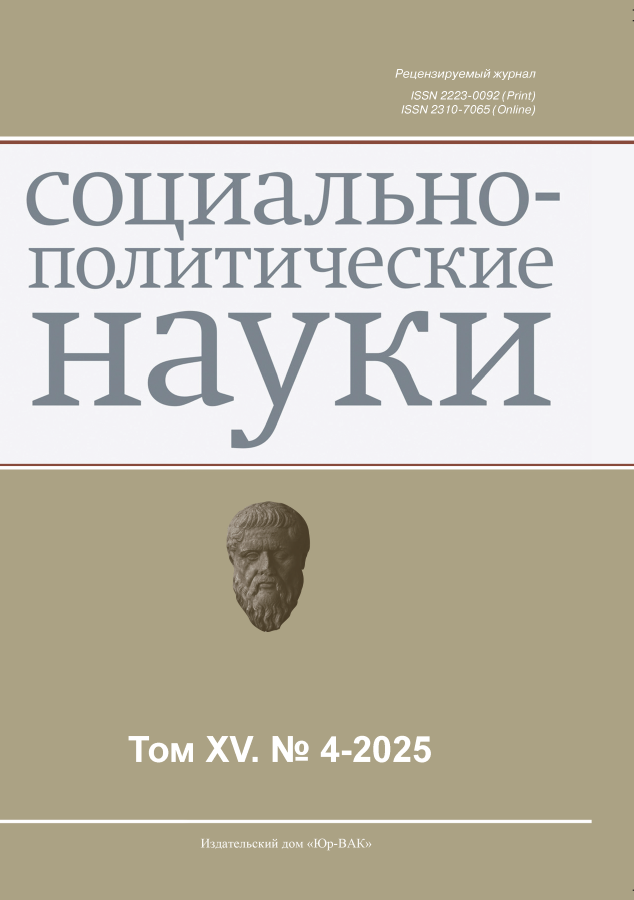Distinctive features of digitalization in providing critical information infrastructure of the Russian Federation
- Autores: Bashlueva N.N.1
-
Afiliações:
- Moscow Regional Branch of the Moscow University of the Ministry of Internal Affairs of Russia named after V. Ya. Kikot
- Edição: Volume 15, Nº 4 (2025)
- Páginas: 127-132
- Seção: Political Institutions, Processes and Technologies
- URL: https://journals.eco-vector.com/2223-0092/article/view/693238
- DOI: https://doi.org/10.33693/2223-0092-2025-15-4-127-132
- EDN: https://elibrary.ru/XEYFEO
- ID: 693238
Citar
Texto integral
Resumo
The subject of this article is the ways and methods of using digital technologies in the field of protection of CII facilities in Russia and foreign countries. The relevance and importance of the chosen topic lies in the rapid development of scientific progress in the field of development and application of information technologies in many areas of public life: medicine, economics, law, etc. The purpose of the article is to study and consider the features of using digital technologies to ensure the safety of CII both in Russia and abroad. The conclusion of the article is devoted to the need for active development and implementation of new ways and methods of using digital technologies in areas related to the protection of CII facilities in Russia.
Texto integral
Sobre autores
Natalya Bashlueva
Moscow Regional Branch of the Moscow University of the Ministry of Internal Affairs of Russia named after V. Ya. Kikot
Autor responsável pela correspondência
Email: bashlueva@mail.ru
Código SPIN: 1147-2621
associate professor, Department of Socioeconomic and Humanities
Rússia, MoscowBibliografia
- Avdeev V.A., Gusev A.V. Cybersecurity of critical information infrastructure: modern threats and counteraction methods. Monograph. Moscow: Yurait, 2022. 315 p. doi: 10.0000/978-5-001-67890-1.
- Belov E.B., Smolentsev N.K. Fundamentals of information security management of critical infrastructure. The training manual. St. Petersburg: Lan, 2021. 245 p. doi: 10.0000/978-5-001-56789-0.
- Ivanov A.P., Petrov S.K. Artificial intelligence in CII security monitoring systems. Information and Security. 2023. Vol. 26. No. 4. Pp. 45–58. (In Rus.). doi: 10.0000/infosec.2023.4.45678.
- Kozlov D.V. Legal aspects of import substitution in the field of critical information infrastructure protection. Pravo. Journal of the Higher School of Economics. 2022. No. 3. Pp. 120–142. (In Rus.). doi: 10.0000/law.hse.2022.3.12345.
- Kupriyanov A.I., Sakharov V.A., Shamshev A.V. Protection of critical information infrastructure facilities. Threats and technologies. Moscow: Hotline – Telecom, 2020. 412 p. doi: 10.0000/978-5-991-01234-5.
- Markov A.S. Comparative analysis of CII cybersecurity models (Russia, USA, China, EU). International Law and International Organizations. 2021. No. 4. Pp. 34–52. (In Rus.). doi: 10.0000/intlaw.org.2021.4.56789.
- Petrenko S.A., Kurbatov V.A. GosSOPKA: Architecture and effectiveness in detecting targeted attacks. Information Technology Security. 2022. Vol. 29. No. 2. Pp. 15–28. (In Rus.). doi: 10.0000/bit.2022.2.12345.
- Pykhtin I.G. Ensuring criminal law protection of national critical information infrastructure facilities in Germany, Austria, Switzerland and France. Proceedings of the Southwestern State University. Series: History and Law. 2019. Vol. 9. No. 2 (31). Pp. 108–115. (In Rus.). doi: 10.0000/issn.9999-9999.2019.2.12345.
- Khaliullin A.I. Detection, suppression and prevention of computer attacks on critical information infrastructure. Bulletin of the Russian Nation. 2017. No. 6 (58). Pp. 143–153. (In Rus.)
- Yarosh A.S., Zhitnikov A.V. Digital economy and safety of CII TEK. Bulletin of the Scientific Center for Safety of Work in the Coal Industry. 2020. No. 3. Pp. 68–72. (In Rus.). doi: 10.0000/coal.safety.j.2020.3.67890.
Arquivos suplementares









